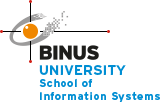Cost Management Planning

Planning cost management is a crucial process in project management that involves defining how project costs will be managed throughout the project lifecycle. This process sets the foundation for effective cost estimation, budgeting, and cost control. Here are the key components and steps involved in planning cost management:
1.Purpose: The primary goal of planning cost management is to establish a framework for managing costs effectively. This includes determining the policies, procedures, and documentation that will guide the planning, execution, and control of project costs.
2.Cost Management Plan: The main output of the planning cost management process is the cost management plan. This document outlines how costs will be estimated, budgeted, managed, and controlled. It serves as a reference for the project team and stakeholders throughout the project.
3.Components of the Cost Management Plan: Level of Accuracy: This section defines the acceptable range of accuracy for cost estimates, including rounding guidelines and contingency funds. For example, it may specify that estimates should be rounded to the nearest $100 and include a contingency of 10-20% for unforeseen expenses.
a. Units of Measure: Clearly defining the units used for cost measurements (e.g., labor hours, materials) ensures consistency and clarity in cost reporting and analysis.
b. Organizational Procedures Links: This includes references to the work breakdown structure (WBS) and control accounts used for project cost accounting. It ensures that the project team understands how costs will be tracked and reported within the organization’s accounting system.
c. Control Thresholds: This section specifies the allowable variation from the baseline cost before corrective action is required. For example, it may state that a cost variance of 10% from the baseline will trigger a review.
d. Rules of Performance Measurement: If the project uses earned value management (EVM), this section defines how performance will be measured, including the frequency of tracking actual costs and the level of detail required.
e. Reporting Formats: This outlines the format and frequency of cost reports that will be provided to stakeholders, ensuring transparency and accountability.
f. Process Descriptions: The cost management plan should describe how all cost management processes will be performed, including estimation, budgeting, and control.
4. Stakeholder Involvement: Engaging stakeholders in the planning process is essential. Their input helps ensure that the cost management plan aligns with organizational goals and expectations, and it fosters buy-in and support for the project.
5. Tools and Techniques: Various tools and techniques can assist in planning cost management, including expert judgment, data analysis, and meetings. These methods help gather information and insights necessary for developing a comprehensive cost management plan.
6. Importance: Effective planning of cost management is vital for project success. It helps prevent cost overruns, ensures that resources are allocated efficiently, and provides a clear roadmap for managing financial aspects throughout the project lifecycle.
References:
Schwalbe, K. (2019). Information technology project management (9th ed.). Cengage.

